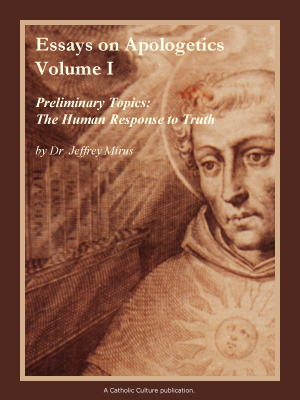Persistent Vegetative State
by Julie A. Grimstad, Mary Senander
The ultimate focus of euthanasia enthusiasts is not those who are truly dying. Quite bluntly, if one is truly dying, nature will soon take its course. The real targets are those who are not dying quickly enough, those whom ethicist Daniel Callahan unkindly termed "biologically tenacious."[1] There have been attempts to redefine death to include persons in "persistent vegetative state" (PVS) in order to discontinue care and/or use their organs/bodies for transplantation/experimentation.
Experts disagree about what PVS is; some medical dictionaries do not even include the phrase. While standards have been proposed, they are not accepted by the entire medical community, and methods and time-frame for diagnostic testing are disputed.
The person in PVS is neither unconscious nor in a coma, and typically has sleep-wake cycles, eye movement, and normal respiratory, circulatory, and digestive functions. Some have random movement, some do not; some can swallow, others cannot. Some have been physically injured from accidents, others suffer from stroke or dementia. In some cases, the brain itself appears to change, in other cases, it appears unchanged.
Some patients are not actually in PVS, but are "locked-in." They may be mute and immobile but mentally alert and able to communicate by blinking or through aids such as computers — if someone gives them that opportunity. Others are severely physically disabled, which greatly impairs their ability to communicate.
In practice, the terms have become so elastic as to categorize Christine Busalacchi, a young Missouri woman, as PVS — even though she said "Hi" to a doctor, made sounds to indicate which soap opera she wanted to watch, pushed buttons on a cassette recorder to play tapes and recognized her father on TV. (Hopefully, she never understood that he was seeking to have her legally killed by dehydration and starvation.)
If definitions are uncertain, diagnosis and treatment plans are even more so:
• Out of 40 patients diagnosed as being in a persistent vegetative state, 17 (43%) were later found to be alert, aware, and often able to express a simple wish. The study is one of the largest, most sustained analyses of severely disabled people presumed to be incapable of conscious thinking, communication, or awareness of their surroundings. The author, London neurologist Dr. Keith Andrews, said, "It is disturbing to think that some patients who were aware had for several years been treated as being vegetative."[2]
• Studies show PVS patients feel pain — indeed, a Univ. of Mich. neurologist, in one of the most complete studies, concluded that, when food and fluids are withdrawn [to impose death], the patient should be sedated.[3]
• A study of 84 patients with a "firm diagnosis" of PVS found that 41% regained consciousness by six months, 52% by three years.[4] These statistics certainly discredit the terms "persistent" and "permanent".
Some objections to epivalothanasia (imposed death) for those in PVS have rested on the hope that "they might recover." Let's face it: many people with handicaps will not recover. Killing them is not the cure —it is a "final solution" that a civilized society must reject as a crime against humanity.
Euthanasia advocates often suggest that death is preferable when a person can no longer experience relationships with others. This arrogant and selfish assumption puts the entire burden on the one who is least able to "perform."
The unconscious world is far more complex than most of us can imagine. We'll never know precisely what is going on inside the mind of another person (even if they can tell us, much is lost in our interpretation). Those who have severe brain injury may still enjoy touch, scent, taste, and sound; they may also feel loneliness, fear and despair. Their inability to satisfy our longing for response does not justify abandonment or imposed death.
For more information: Jane D. Hoyt, M.Ed., "A Gentle Approach: Interacting With a Person Who is Semi-Conscious or Presumed in a Coma," Program for Human Rights & Medicine, Univ. of Minnesota, 1994.
1 The Hastings Center Report, 10/93:22.
2 British Medical Journal, 7/6/96. " Detroit Free Press, 6/26/90:1 OA.
3 British Medical Journal, 8/92:304-305.
© Human Life Alliance of Minnesota Education Fund, Inc., 3570 Lexington Ave. N, Suite 205, St. Paul, MN 55126
This item 831 digitally provided courtesy of CatholicCulture.org






